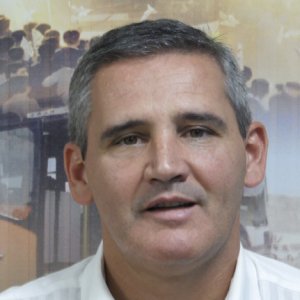Nurturing SMEs and Human Talent Vital Steps Toward Evolution

STORY INLINE POST
Q: How are companies collaborating in order to improve their production and manufacturing processes?
A: Due to a lack of the necessary capacity to serve Tier 1 clients, Tier 3 companies are starting to work together to improve efficiency. They have found that if they buy raw materials together, they can make significant savings, and if they share technologies, they can boost productivity. Ultimately, if they work together across the entire value chain, they will provide better products and obtain better margins. As a result of these collaborations, the Tier 1s and the OEMs will also see savings. However, while the Tier 3 companies are well-prepared, their reach is not quite broad enough. They have the knowledge, the capabilities, and the vision, but they do not yet have all the hardware that they need. Most OEMs have development programs for small companies in order to ensure future production. Once they find a small company that meets their standards, the OEMs can help them with financing long before the production programs actually start. Initially, it may not be too profitable, but the OEMs are betting on the future by preparing these companies for the rising tide.
SMEs are already working on cost reduction programs that cover various different aspects, such as labor costs. While there is not much to cut in this field, they can merge tax savings and logistics savings in general terms with their supply chain costs. This is the secret to success. If salaries are cut then people will migrate to the next company and they will be welcomed with open arms because of their skills. Companies have to focus on reducing costs in the supply chain arena, especially in terms of logistics. When importing goods, if companies comply with certain tax requirements, they can cross the border much faster with no restrictions. If companies are able to boost efficiency in the supply chain, they will save a considerable amount of money.
Q: How will the availability of skilled human resources affect the development of Mexico as an R&D hub?
A: To understand this, we must first analyze the human capital aspects. There is a major human capital concern in the industry because companies are fighting to attract and retain talent. Industry employee turnover is high, and if companies offered a career plan to new recruits, they would be more likely to retain them. Although Mexico is one of the top countries in the world in terms of the number of engineers it produces, there is still a deficit. The industry needs a particular amount of engineers each year, but the country cannot produce them quickly enough. If R&D centers do not start to merge, the demand for engineers and talent will not be met.
Mexico should share technology and research throughout the whole industry in order to meet demand. This will not be easy. For instance, OEMs will not share technology, but they will share their needs. R&D departments will begin to look at the local market to find the companies that could evolve to meet their needs with some assistance. If they do not do that together, the HR requirements will not be met. There is a trend arising in which these R&D centers are merging, with the Center for Engineering and Industrial Development (CIDESI) being a good example of a research center that is doing this. There is also a manufacturing and automotive university in Queretaro. Everybody is going to keep their secrets, but the industry needs to start sharing more information.
Q: What does Mexico need to do to become a viable R&D hub?
A: The country has demonstrated that it is very wellprepared. There are several needs and requirements, such as more highways, more railroads, more ports, more general infrastructure, and more R&D centers, but the country is working toward that. This is by no means a new trend; our capabilities have been in development for over 80 years. Finally, the country needs more attention from investors. I recently visited ITESM and witnessed that they are building the future. The institute has its own mini R&D center as well as several campuses, and all the engineers that graduate from ITESM are absorbed by the industry straight away. I think that if Mexico offers the right incentives to foreign investors, they will see that the country is ready to become an R&D hub. VUHL is a good example of the promise of Mexican R&D. While VUHL is not a brand that Mexico particularly needs, the country is destined to have its own brand for the local market in the near future, provided that the right investments are made.






















